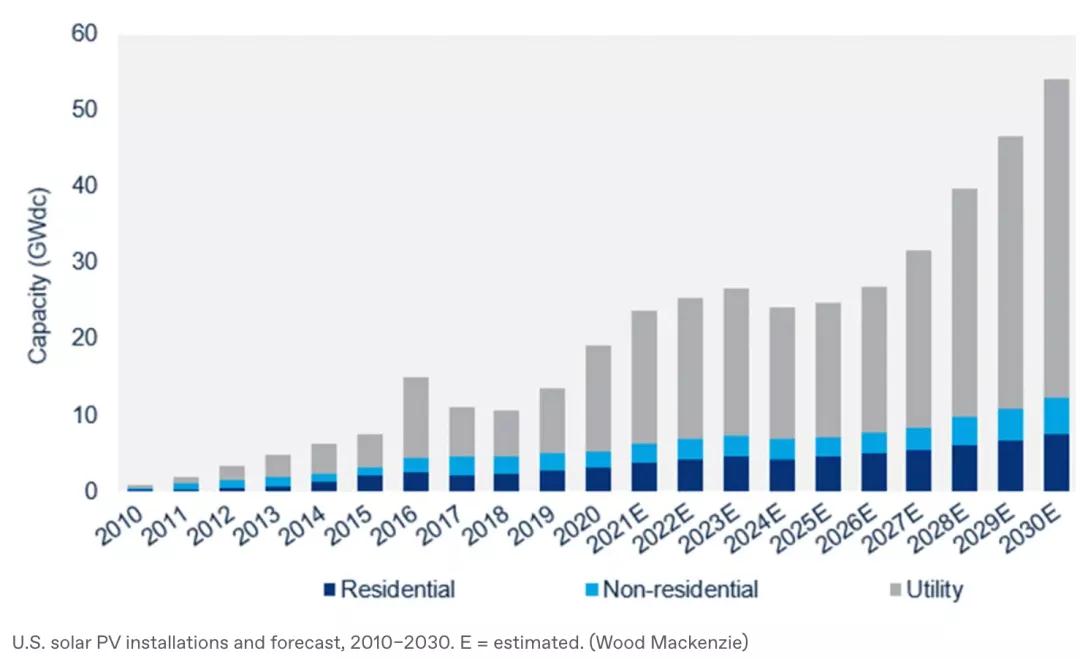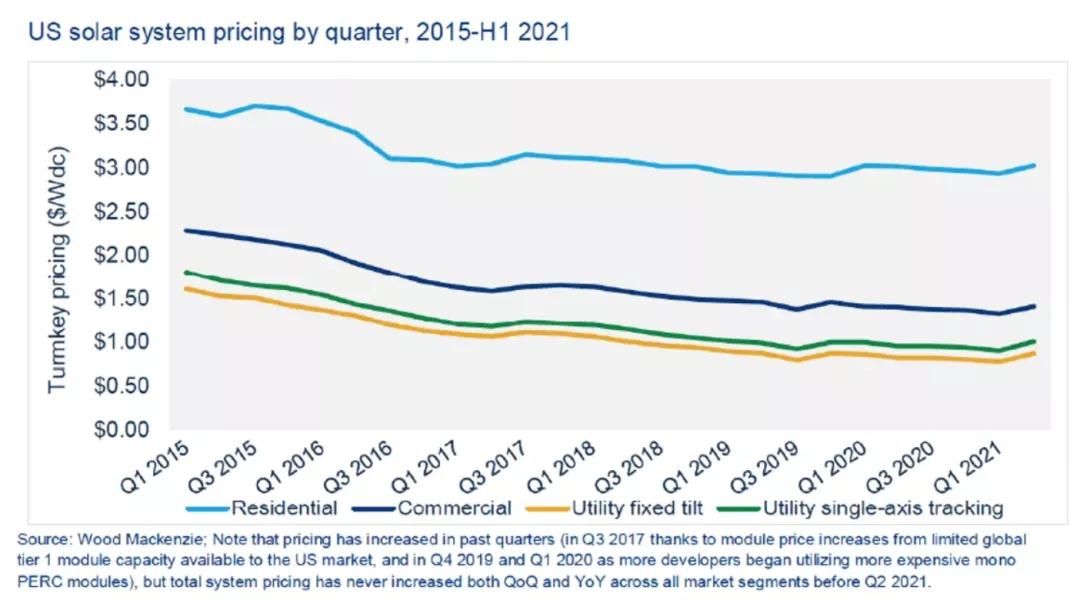Although the global economic situation is changing and the domestic energy policy of the United States is constantly changing, the US solar market has successfully achieved a decade of stable growth.
The growth rate of solar energy in the United States is staggering and sustained. In addition to the 23GW deployed in the United States in 2021, the research organization S&P Global Market Intelligence also predicts that 44GW of photovoltaic will be put into use in 2022, which is almost double that of 2021. UISOLAR hope to have the chance to participate in some projects.
According to reports from the Solar Energy Industry Association and Wood Mackenzie, the cumulative installed capacity of solar photovoltaic in the United States has exceeded 100 GW. S&P’s researchers said that demand in the United States remains strong, with 17.4 GW of power generation capacity under development or under construction.

In the memory of many solar analysts, the price of solar system hardware has risen for the first time in an industry where prices continue to fall. All commodity materials used in the manufacture of solar modules are under pressure from rising prices.

Global logistics difficulties are forcing delays in the delivery of photovoltaic materials and modules and rising prices. It is estimated that transportation costs have risen by 500%. Solar energy is still the lowest-cost source of power generation in many places, but power purchase agreements are being renegotiated due to meager profits. Nevertheless, the strong demand for solar energy means that photovoltaic projects are more temporarily postponed rather than cancelled.
Promote U.S. solar manufacturing
American solar manufacturers basically lost in the war with China. According to Wood Mackenzie's data, among the nearly 400 GW of photovoltaic module production capacity in the world, the current US photovoltaic module production capacity is only 7.5 GW. Determined American policymakers are trying to promote legislation through subsidies and support to stimulate the domestic solar manufacturing industry and use its power generation as a potential employment engine.
Biden and the Trump administration have agreed on at least one thing: to maintain trade sanctions on Chinese goods, including solar panels. Import tariffs are either an effective tool to defend trade sovereignty, or a blunt tool that increases consumer costs and has little effect on the creation of domestic industries. The U.S. International Trade Commission recommended last month that Biden maintain tariffs on imported crystalline silicon photovoltaic cells and modules; on the other hand, the Solar Energy Industry Association asked Biden to stop imposing tariffs.
 online service
online service +86 (0592)5663849
+86 (0592)5663849 sales@uisolar.com
sales@uisolar.com solar-mount.au
solar-mount.au